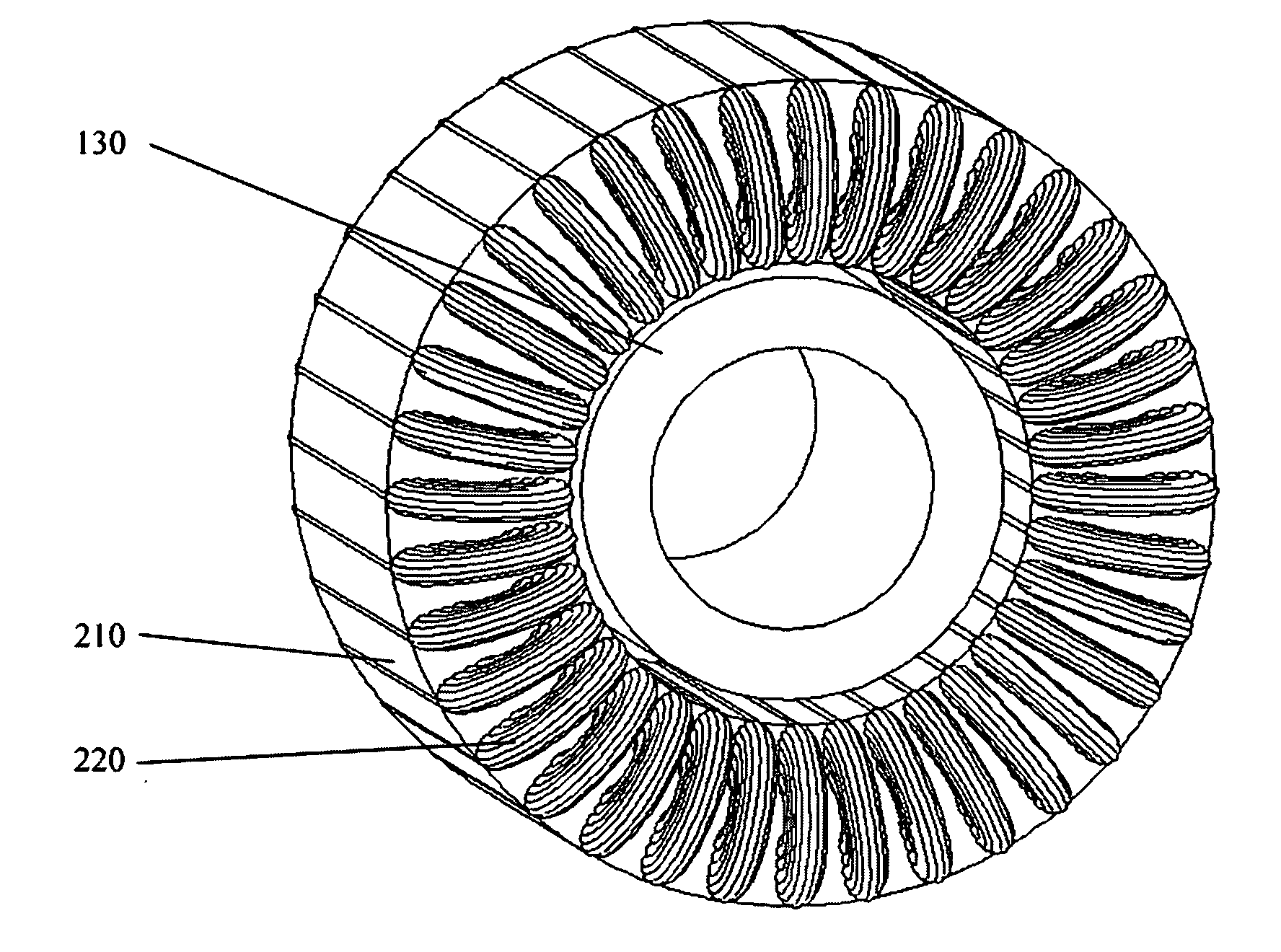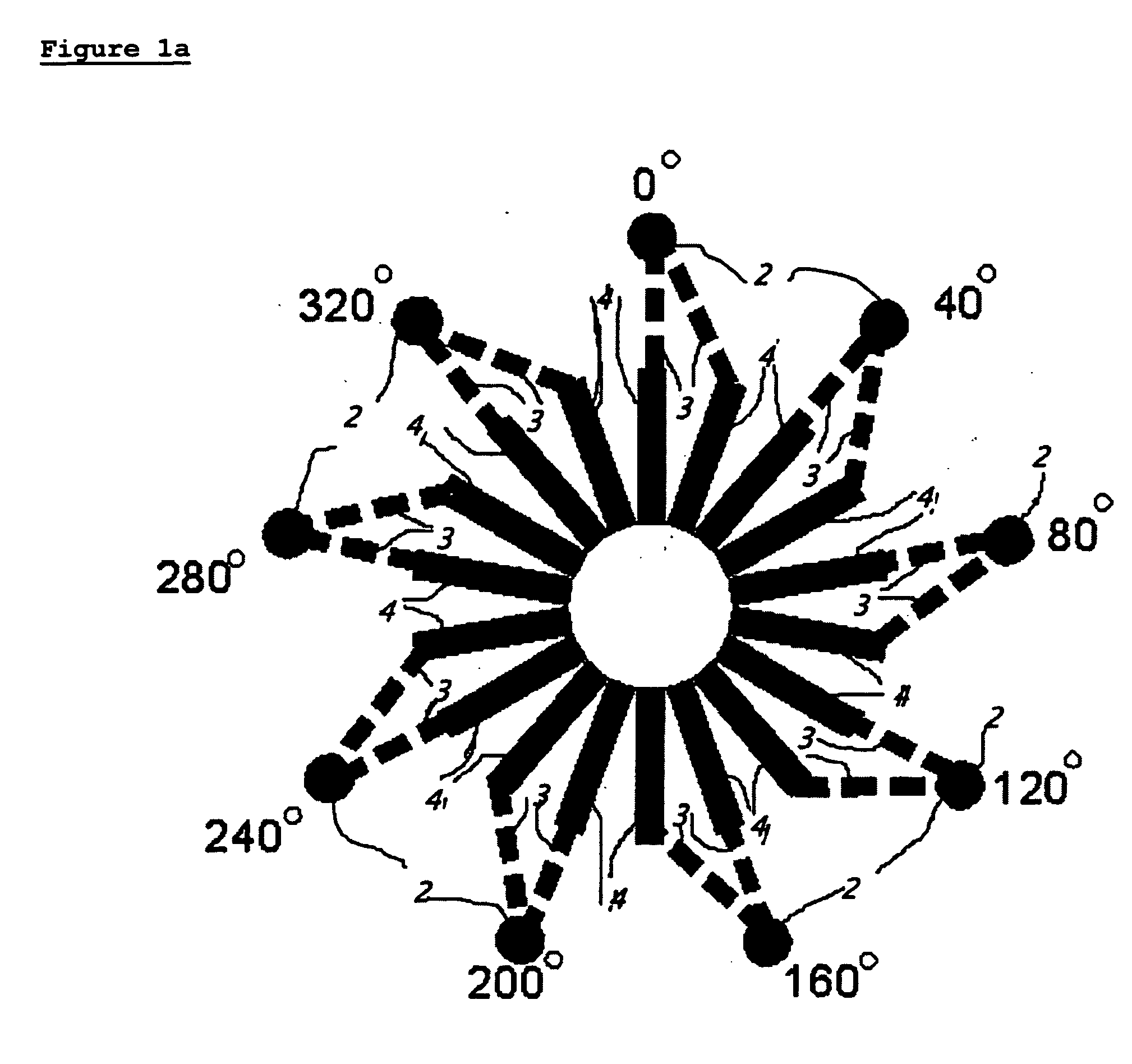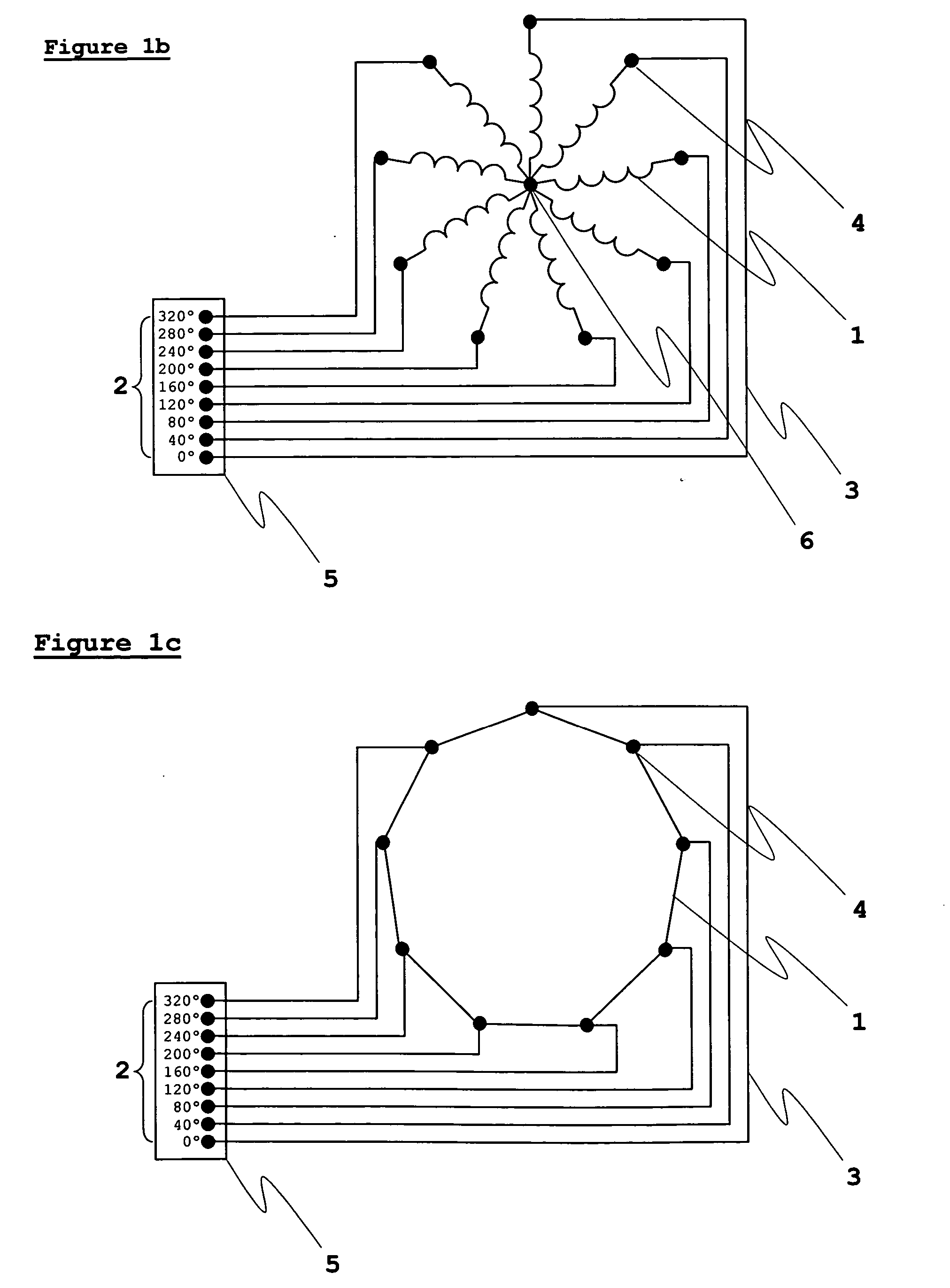Hub motors
a technology of hub motors and hubs, which is applied in the direction of motor/generator/converter stoppers, dynamo-electric converter control, and magnetic circuit shape/form/construction, etc., can solve the problems of device failure, inverter cost considerably greater than the cost of motor supply, and inverter electronics overload severely limited, etc., to achieve high pole count
- Summary
- Abstract
- Description
- Claims
- Application Information
AI Technical Summary
Benefits of technology
Problems solved by technology
Method used
Image
Examples
Embodiment Construction
[0112] Embodiments of the present invention and its advantages are best understood by referring to FIGS. 3-4 of the drawings, like numerals being used for like and corresponding parts of the various drawings.
[0113]FIG. 3a shows an end view of one of the windings of a prior art, normally wound, 2 pole stator. The winding is composed of multiple conductor turns, placed in two slots on opposite sides of the stator. The conductor turns form a loop around the two sides on the stator via end turns as shown. As will be readily appreciated, these end turns comprise a more-or-less large proportion of the total conductor length used, depending on the relative length and diameter of the stator. This represents a full span winding. Short pitch winding are often used to reduce the problems with end turns, but they introduce their own costs.
[0114]FIG. 3b shows a schematic for the present invention. The invention is directed to an outside-wound stator, in which the conductor forms a loop, not vi...
PUM
 Login to View More
Login to View More Abstract
Description
Claims
Application Information
 Login to View More
Login to View More - R&D
- Intellectual Property
- Life Sciences
- Materials
- Tech Scout
- Unparalleled Data Quality
- Higher Quality Content
- 60% Fewer Hallucinations
Browse by: Latest US Patents, China's latest patents, Technical Efficacy Thesaurus, Application Domain, Technology Topic, Popular Technical Reports.
© 2025 PatSnap. All rights reserved.Legal|Privacy policy|Modern Slavery Act Transparency Statement|Sitemap|About US| Contact US: help@patsnap.com



